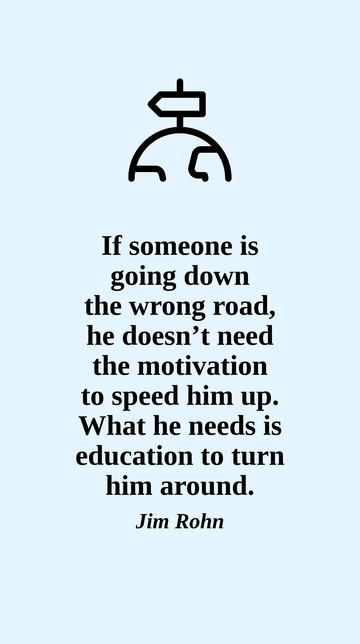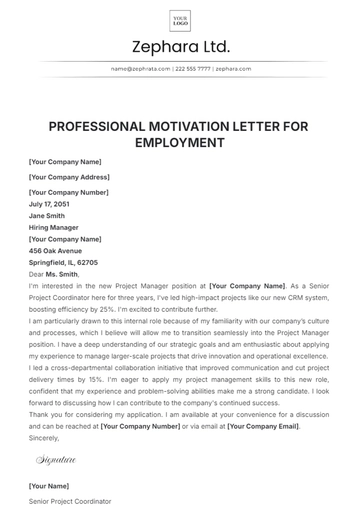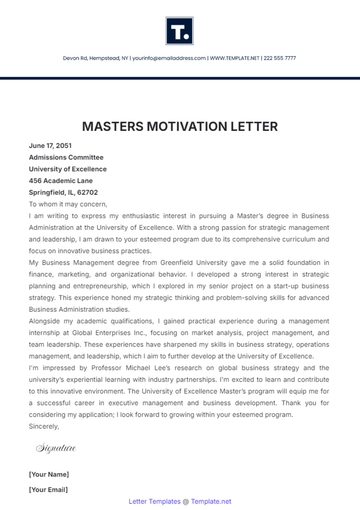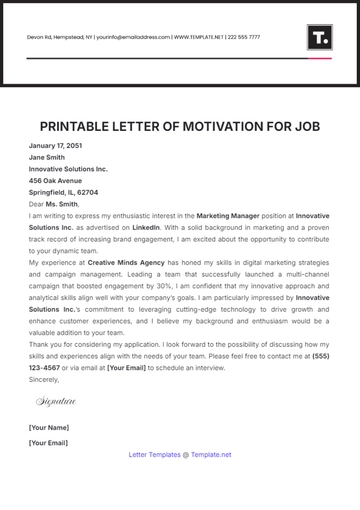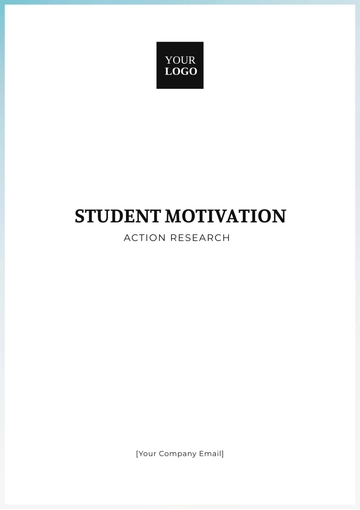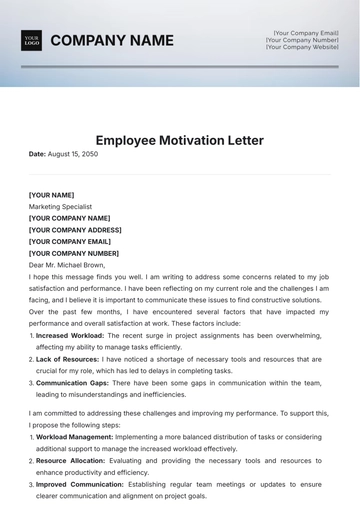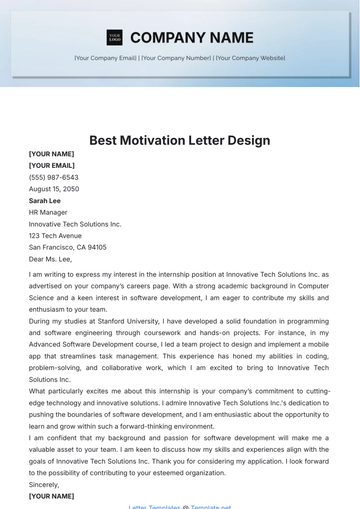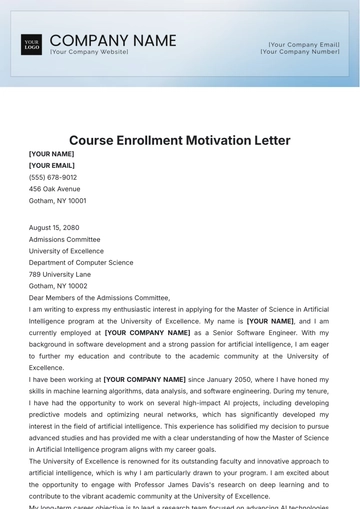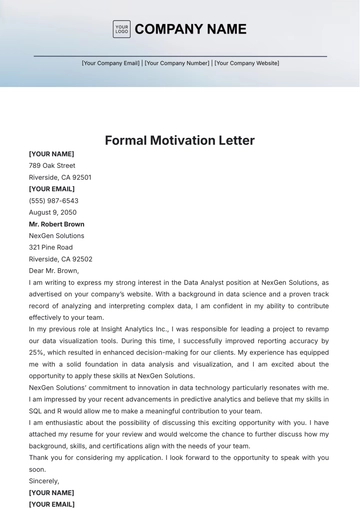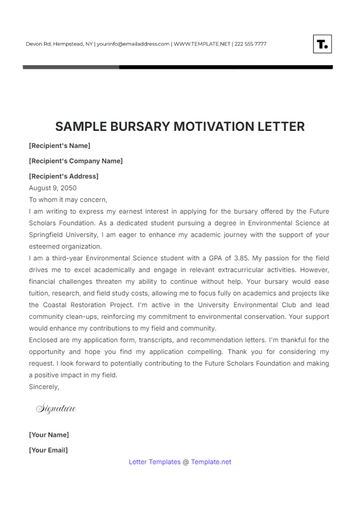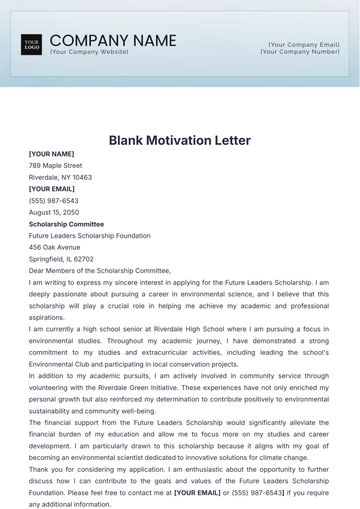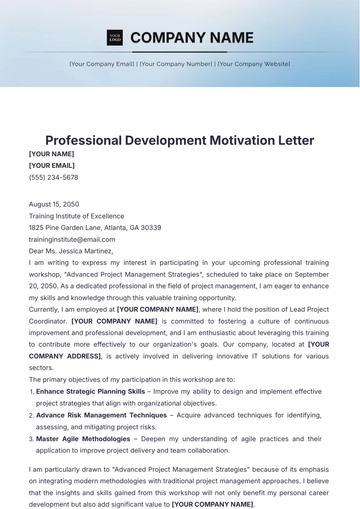Free Motivation Summary

Introduction:
The effectiveness of any organization heavily relies on the motivation of its workforce. This summary delves into key strategies that senior management can employ to enhance [EMPLOYEE MOTIVATION] in the workplace. Recognizing that motivated employees are essential for achieving organizational goals and maintaining a competitive edge, senior management must prioritize creating a work environment that fosters engagement, satisfaction, and commitment among employees. By implementing effective [MOTIVATION STRATEGIES], organizations can cultivate a culture of high performance, innovation, and continuous improvement, driving sustainable success in today's dynamic business landscape.
Motivation and Performance:
Employee motivation plays a pivotal role in determining [PRODUCTIVITY] and overall output within an organization. A motivated workforce is characterized by its propensity for [INNOVATION], [DILIGENCE], and [COMMITMENT], all of which contribute to enhanced performance and the achievement of organizational objectives. When employees feel motivated, they are more likely to proactively seek solutions, think creatively, and persist in the face of challenges. This increased level of engagement and dedication translates into higher levels of productivity, as motivated employees are driven to perform at their best and contribute positively to the success of the organization.
Moreover, the relationship between motivation and performance is reciprocal; as employees experience [SUCCESS] and [RECOGNITION] for their efforts, their motivation tends to increase, leading to further improvements in performance. Conversely, when motivation levels are low, employees may become [DISENGAGED], leading to decreased productivity and potentially negative impacts on organizational outcomes. By investing in employee [DEVELOPMENT], providing opportunities for [GROWTH AND ADVANCEMENT], and fostering a [POSITIVE WORK ENVIRONMENT], organizations can cultivate a motivated workforce that drives performance excellence and sustains long-term success.
Effective Motivation Strategies:
Boosting employee motivation requires a multifaceted approach that addresses various aspects of the work environment and employee experience. One key strategy is [FOSTERING A POSITIVE WORK ENVIRONMENT], where employees feel valued, respected, and supported in their roles. This involves promoting open communication, fostering a culture of collaboration and teamwork, and providing opportunities for employees to voice their opinions and contribute ideas.
Another crucial aspect is [PROVIDING OPPORTUNITIES FOR GROWTH AND DEVELOPMENT]. Employees are more likely to feel motivated and engaged when they see a clear path for advancement and are given opportunities to enhance their skills and knowledge. This can include offering training programs, mentorship opportunities, and career development resources to help employees reach their full potential.
Enhancing a Positive Work Environment:
Creating a [POSITIVE WORK ENVIRONMENT] is essential for fostering employee engagement, satisfaction, and productivity. A healthy and inclusive work culture provides a platform for employees to thrive and contribute their best efforts to the organization. One key aspect of enhancing a positive work environment is [FOSTERING COMMUNICATION]. Open and transparent communication channels facilitate collaboration, idea-sharing, and problem-solving among team members. Encouraging regular feedback and dialogue between managers and employees helps build trust and mutual understanding, creating a supportive atmosphere where everyone feels heard and valued.
Employee Development and Growth:
Investing in [EMPLOYEE DEVELOPMENT AND GROWTH] is essential for nurturing talent, retaining top performers, and driving organizational success. Employees highly value opportunities to advance their careers and enhance their skills, making it crucial for organizations to prioritize their professional development. One effective strategy for promoting employee growth is [CREATING CLEAR CAREER PATHS]. By outlining potential career trajectories and advancement opportunities within the organization, employees are empowered to set goals, chart their progress, and take ownership of their career development journey.
KEY OUTCOMES:
Increased Employee Engagement: Employees who have access to opportunities for [CAREER DEVELOPMENT] and [GROWTH] are more likely to feel engaged and committed to their work and the organization. They are motivated to invest their time and effort into achieving their goals and contributing to the success of the organization.
Enhanced Employee Performance: As employees acquire new [SKILLS] and [COMPETENCIES] through [TRAINING AND DEVELOPMENT] programs, their performance levels are likely to improve. They become better equipped to handle their responsibilities, solve problems, and adapt to changing circumstances, leading to higher productivity and quality of work.
Improved Retention Rates: Providing clear [CAREER PATHS] and investing in [EMPLOYEE DEVELOPMENT] sends a message to employees that their growth and advancement are valued by the organization. This can contribute to higher levels of job satisfaction and lower turnover rates as employees are more likely to stay with the organization for the long term.
Conclusion:
In conclusion, motivating employees is a multifaceted process that requires a tailored approach. The intersection of a [POSITIVE WORK ENVIRONMENT], [EMPLOYEE DEVELOPMENT], and [RECOGNITION] forms a potent trifecta that can significantly boost motivation in the workplace. By fostering a culture of open communication, collaboration, and inclusivity, organizations create an environment where employees feel valued, supported, and empowered to excel in their roles.
- 100% Customizable, free editor
- Access 1 Million+ Templates, photo’s & graphics
- Download or share as a template
- Click and replace photos, graphics, text, backgrounds
- Resize, crop, AI write & more
- Access advanced editor
Elevate your motivation game with Template.net's Motivation Summary Template. Fully editable and customizable, this tool empowers you to craft personalized summaries tailored to your goals. Seamlessly edit in our Ai Editor Tool for a polished and inspiring overview that fuels your drive and propels you towards success.








